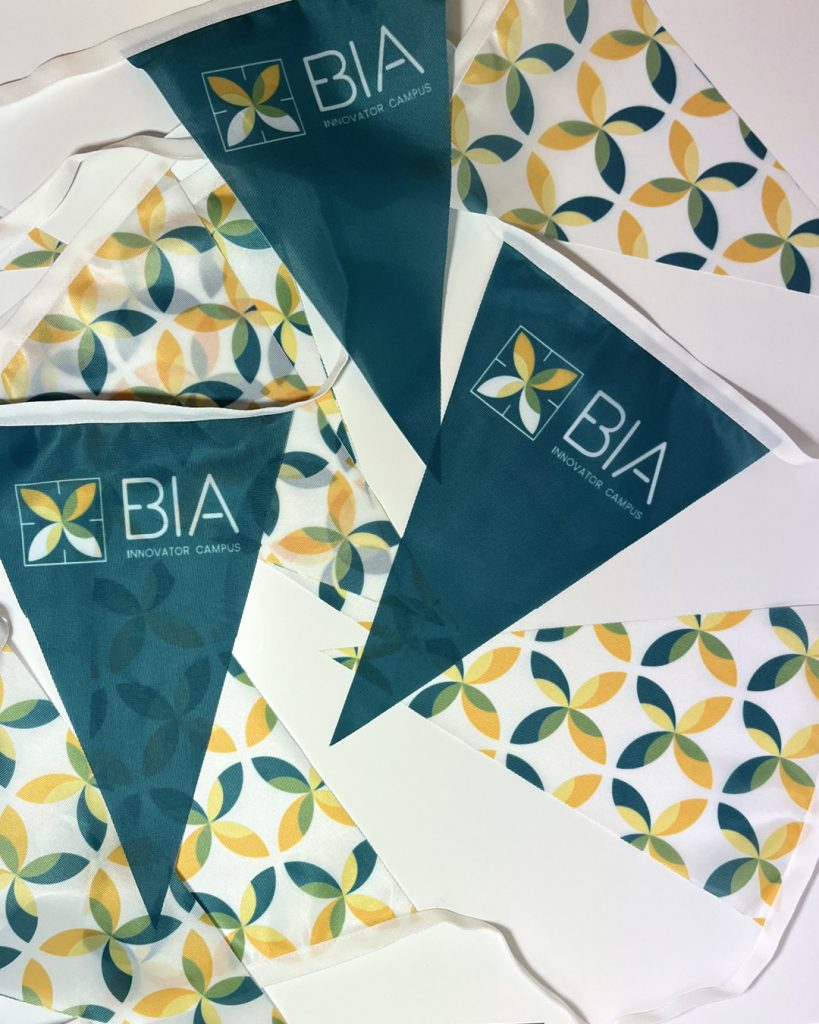When it comes to building a strong brand, creating a memorable and effective logo is essential. Your logo serves as the face of your business, representing your values, and personality, and offering a visual representation of your brand identity. In this article, we will explore how to create the perfect logo that captures the essence of your brand and engages your target audience.
Understanding the Importance of a Logo
Before we dive into the nitty-gritty of logo design, it’s important to understand the role of a logo in branding. A logo is a visual cornerstone of your brand that communicates your brand’s identity, values, and personality. It serves as a symbol that represents your brand and establishes a strong visual identity that customers can easily recognise across various media channels.
When you think of iconic logos, what comes to mind? Perhaps the golden arches of McDonald’s, the swoosh of Nike, or the bitten apple of Apple. These logos are so recognisable that they don’t even need accompanying text to be identified. That’s the power of a well-designed logo.
The Role of a Logo in Branding
A logo is a key component of your brand identity and is critical in establishing brand recognition. Your logo should be representative of your brand’s personality, values, and mission, thereby helping you connect with your target audience and differentiate yourself from the competition.
For example, if your brand is focused on sustainability and eco-friendliness, your logo should reflect those values through the use of earthy colours, organic shapes, and perhaps even a leaf or tree icon. This will help your target audience quickly understand what your brand is all about and make a connection with your values.
On the other hand, if your brand is focused on luxury and high-end products, your logo should reflect that through the use of elegant typography, clean lines, and perhaps even a metallic or shiny finish. This will help your target audience associate your brand with luxury and high quality.
How a Logo Affects Consumer Perception
The impact of a logo on a customer’s perception of a brand cannot be overstated. A strong logo design can create a lasting positive impression of your brand, while a poorly designed logo can damage the perception of your brand among potential customers.
Think about a time when you saw a poorly designed logo and immediately formed a negative opinion about the brand. Perhaps the logo was unprofessional or poorly executed, making you question the quality of the brand’s products or services. This is why it’s so important to invest time and resources in creating a logo that resonates with your target audience and accurately represents your brand identity.
Ultimately, a logo is more than just a pretty design. It’s a powerful tool that can help you establish a strong brand identity, connect with your target audience, and differentiate yourself from the competition. So, when it comes to logo design, don’t skimp on the details. Your brand’s success could depend on it.
Defining Your Brand Identity
Before you embark on the logo design journey, it’s essential to clearly define your brand identity. Your brand identity is a unique combination of your values, personality, and mission that sets you apart from your competition.
When defining your brand identity, it’s important to consider your company’s history, vision, and goals. Take the time to brainstorm and write down key words or phrases that represent your brand. Use these as a guide when creating your logo.
Determining Your Brand’s Core Values
Your brand’s values serve as guidelines for your company culture and your relationship with customers. Identifying and articulating your values will help you create a logo that accurately represents who you are and what you stand for. The values that inspire your business should be reflected in your logo design.
Consider what your company stands for and what principles guide your decision-making. Are you committed to sustainability? Do you prioritise innovation and creativity? These values can be incorporated into your logo design to create a more meaningful and impactful visual representation of your brand.
Identifying Your Target Audience
Understanding your target audience is essential in creating an effective logo. Who are you creating your logo for? What are their preferences? What message do you want to convey? Knowing the answers to these questions will help you create a logo that resonates with your audience and is more likely to be memorable.
Consider the demographics of your target audience, such as age, gender, and location. Think about what motivates them and what problems they need solutions for. By understanding your target audience, you can create a logo that speaks directly to them and helps build a strong connection with your brand.
Establishing Your Brand’s Personality
Your brand personality is the human characteristics that set your brand apart from others. Your personality should reflect the tone and voice of your brand, further helping communicate your brand identity. A clear understanding of your brand personality will enable you to create a unique and distinctive logo design.
Consider the emotions you want your brand to evoke, such as excitement, trust, or sophistication. Think about the language and tone you use when communicating with your audience. These elements can be incorporated into your logo design to create a visual representation of your brand personality.
By taking the time to define your brand identity, you can create a logo that accurately represents your brand and resonates with your target audience. Your logo is often the first impression people have of your brand, so it’s important to make it count.
Research and Inspiration
Before creating a logo, conducting research and gathering inspiration is critical. This will help you refine your ideas and identify potential design elements, ensuring that your final logo design is unique and memorable.
Analysing Competitor Logos
Explore the logos of your competitors to analyse what works and what doesn’t. This will help you identify the gaps in the market and ensure that your logo stands out among competitors. As you analyse your competitor’s logos, consider their colour choices, font styles, and the overall message they are trying to convey. Take note of what you like and dislike about each logo and use this information to guide your own logo design process.
Exploring Logo Design Trends
Keeping abreast of current design trends can be inspiring, but also dangerous. Trends can quickly become outdated, so it’s essential to only include trendy aspects in your logo if it aligns with your brand strategy. However, exploring logo design trends can give you a sense of what is currently popular and what might resonate with your target audience. In addition to looking at current design trends, consider exploring historical design trends to gain a better understanding of how logos have evolved over time.
Gathering Inspiration from Various Sources
Look for inspiration everywhere and be open to unexpected ideas. Think outside the box, draw from a range of sources, and experiment with different design concepts. Inspiration can come from various sources, including art, architecture, or even nature. For example, if your brand is focused on sustainability, you might draw inspiration from the natural world and incorporate organic shapes and earthy tones into your logo design. Alternatively, if your brand is focused on innovation, you might draw inspiration from futuristic design concepts and incorporate bold, geometric shapes into your logo design.
As you gather inspiration, keep in mind that your logo should be a reflection of your brand identity and values. It should be unique, memorable, and instantly recognisable. Take the time to explore different design concepts and refine your ideas until you have a logo that truly represents your brand.
Design Principles for an Effective Logo
Now that you have established your brand identity and conducted thorough research, it’s time to put pencil to paper and refine your logo design. Keep these essential design principles in mind when creating your logo.
Simplicity and Scalability
Creating a simple logo design is essential for ensuring that it is memorable and scalable. An overly complicated design can overwhelm viewers and potentially lead to confusion. However, simplicity doesn’t mean that your logo has to be boring or plain. In fact, some of the most iconic logos in the world are incredibly simple. Think of the Nike swoosh or the Apple logo.
When creating your logo, it’s important to consider its scalability. A simplified design is also more likely to be scalable, meaning it can be resised while maintaining its integrity. This is especially important when it comes to printing your logo on various materials, such as business cards or billboards. A scalable logo will ensure that your brand is always represented in the best possible way.
Versatility and Adaptability
Your logo should be versatile and adaptable across various mediums and applications. This means that the design should work equally well in various sizes and formats. Consider how the logo will appear on different backgrounds, such as white or black, and ensure that it works effectively in each medium.
It’s also important to think about how your logo will look in different contexts. For example, if your logo is going to be used in an online advertising campaign, it should be optimised for digital use. On the other hand, if your logo is going to be used on a physical product, it should be optimised for print. By creating a logo that is versatile and adaptable, you’ll be able to use it in a variety of different contexts without having to make significant changes.
Timelessness and Longevity
A logo is a long-term investment, and it’s important to choose a design that can stand the test of time. A timeless design is less likely to become outdated quickly, meaning that your brand will not have to go through frequent redesigns. Additionally, a timeless design can foster a sense of longevity, contributing to consumer trust and brand loyalty.
When thinking about the timelessness of your logo, it’s important to consider current design trends. While it may be tempting to jump on the latest design bandwagon, it’s important to remember that trends come and go. Instead, focus on creating a logo that is classic and timeless, and that will still be relevant in 10 or 20 years.
Relevance and Memorability
A logo should be memorable and relevant to the brand it represents. It should evoke emotions, resonate with the viewer and create a lasting impression. A memorable design can help you stand out in a crowded market, further increasing brand loyalty and recognition.
When creating your logo, think about what makes your brand unique and how you can communicate that through your design. Consider using colours and symbols that are relevant to your industry, as well as typography that reflects your brand’s personality. By creating a logo that is both memorable and relevant, you’ll be able to create a strong brand identity that resonates with your target audience.
Conclusion
Creating the perfect logo requires dedication, creativity, and strategic thinking. By breaking down the process into manageable steps, and ensuring that your logo aligns with your brand identity and resonates with your audience, you can create a logo that is both effective and memorable. Apply the principles discussed in this article to craft a timeless design that will serve as the cornerstone of your brand for years to come.



